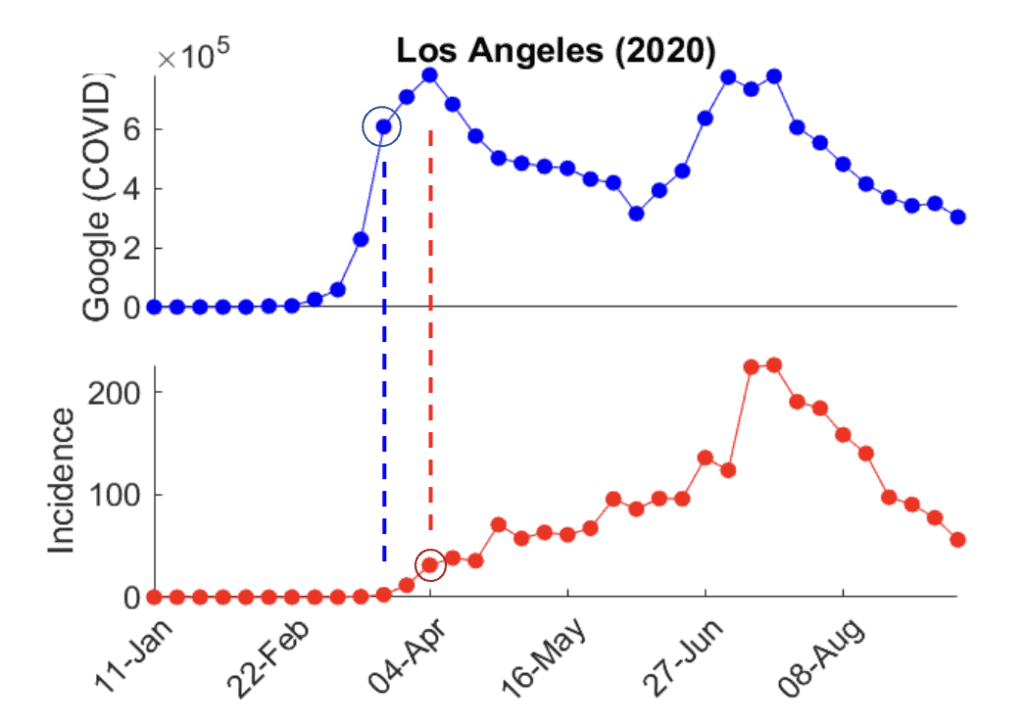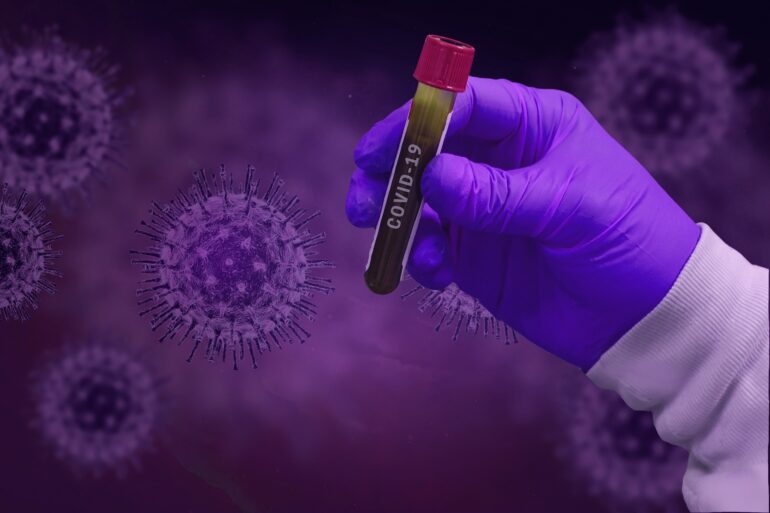TL;DR:
- Oklahoma State University’s College of Arts and Science utilizes machine learning in academia.
- Dr. Lucas Stolerman’s research focuses on AI-driven early warning systems for COVID-19 outbreaks.
- Dr. Howard Sanborn explores government responses to crises in Hong Kong using machine learning.
- Researchers at OSU work on precision livestock management tools with AI to identify stressed cattle.
Main AI News:
In the realm of academia, Artificial Intelligence (AI) has garnered considerable attention in recent months for its remarkable capacity to efficiently execute intricate tasks. Nevertheless, within the academic sphere, there exists a somewhat negative perception of AI, primarily due to its misuse by students. However, the esteemed researchers at Oklahoma State University’s College of Arts and Science have harnessed a subfield of AI known as machine learning to embark on research endeavors with a profoundly positive impact, particularly in the exploration of complex datasets.
Unearthing Insights:
Dr. Lucas Stolerman, an accomplished assistant professor in the Department of Mathematics, has delved into the realm of AI-driven research. His work revolves around the utilization of digital traces to construct prospective and real-time county-level early warning systems. These innovative systems, powered by machine learning, are designed to predict and anticipate COVID-19 outbreaks within the United States.
During his postdoctoral tenure at Boston Children’s Hospital and Harvard Medical School, Dr. Stolerman commenced this groundbreaking research project under the guidance of Dr. Mauricio Santillana, in collaboration with doctoral student Leonardo Clemente. Subsequently, upon joining the faculty at OSU, the project reached its culmination.
“Our objective was to proactively identify potential COVID-19 outbreaks in US counties,” Dr. Stolerman elucidated. “To achieve this, we engineered a machine learning-based early warning system that relies on internet-based digital data.”
This early warning system triggers an alert when specific digital data reaches a predetermined threshold. The data sources encompassed Twitter microblogs and Google trends, encompassing terms such as “Covid,” “Covid19,” “How Long Does Covid Last,” “Covid Symptoms,” “Fever,” and “Cough,” among others. By training their models on historical data, the researchers were able to make out-of-sample predictions and evaluate the system’s accuracy in forecasting COVID-19 outbreaks.
Dr. Stolerman articulated, “COVID-19 outbreaks are the result of a multifaceted interplay of factors, including viral mutations, social interactions, vaccination, and human behavior. Our study underscores the profound insight that digital traces can serve as a valuable tool for forecasting the onset of outbreaks in US counties.”
This research has yielded machine learning techniques that leverage internet-based digital traces to forewarn surges in COVID-19 activity within US counties. Dr. Jay Schwieg, head of the Department of Mathematics, emphasized, “Whether it’s employing artificial intelligence to probe and predict disease spread or adapting advanced computational methods to address pertinent questions in biology, Dr. Stolerman’s research underscores the broad applicability of mathematics and its profound interconnections with other scientific disciplines.”
Navigating the Past:
Meanwhile, Dr. Howard Sanborn, a distinguished professor and head of the political science department, secured a grant from the US Consulate in Hong Kong. This funding has facilitated the collection of legislative data and the deployment of machine learning models to assess governmental responses to crises within Hong Kong.
In the course of investigating legislative politics in Hong Kong, Dr. Sanborn, a 2019 Core Fulbright Scholar, discerned a series of transformations in the city’s governance, triggered by actions and reactions to conflicts. Notably, China and most former and current British Commonwealth nations maintain comprehensive online databases, available in English, Chinese, and Cantonese, containing governmental documents, particularly legislative proceedings. This extensive resource enables Dr. Sanborn and his team to scrutinize protests at various junctures in Hong Kong’s history, stretching back to the 1850s.
The primary objective is to identify recurring words and phrases within conversations preceding, during, and following these tumultuous events. However, the arduous task of sifting through the database for government debates and deliberations presents a formidable challenge.
“I sought this grant to harness machine learning computing techniques for expeditiously processing a large volume of documents,” Dr. Sanborn explained. “Our overarching aim is to comprehend the government’s responses to crises.”
The initial grant has facilitated the recruitment of students well-versed in both machine learning and political science. Dr. Sanborn elaborated, “Currently, we are embarking on an unsupervised modeling approach, selecting a limited timeframe and examining government debates to fine-tune our modeling.”
Collaboratively, a statistics graduate student focuses on machine programming, while a political science graduate student endeavors to contextualize the phrases for each date and session, refining the model as they progress. Dr. Sanborn emphasized the significance of transdisciplinary research, stating, “Transdisciplinary research holds immense significance, and I firmly believe in its potential. I believe our mathematics, computer science, and statistics departments have much to offer, particularly in the social sciences, and I am optimistic that this endeavor represents a step in that direction.”
Stress in Focus:
In the United States, the beef industry stands as the world’s largest, with Oklahoma playing a pivotal role as a significant contributor to this agricultural commodity. However, the industry faces a critical challenge in the form of stress-related mortality among feedlot cattle. This threat is exacerbated by extreme weather conditions and a penchant for selecting animals for rapid growth.
Currently, there are no available resources to assist producers in identifying cattle prone to stress and associated mortality. Researchers within CAS and the Department of Animal and Food Science have garnered a United States Department of Agriculture (USDA) Agriculture and Food Research Initiative (AFRI) grant, specifically the Inter-Disciplinary Engagement in Animal Systems (IDEAS) program. This grant empowers them to develop tools rooted in artificial intelligence and machine learning to identify susceptible animals.
Ashley Railey, sociology assistant professor and project co-principal investigator, elaborated, “Our research is aimed at developing precision livestock management tools that leverage artificial intelligence and machine learning to pinpoint cattle susceptible to stress. Additionally, we are exploring how to effectively disseminate this research to producers and implement these tools within their operations.”
Each co-investigator brings preliminary data to the project. Railey’s preliminary research indicates that producers place significant value on early detection to mitigate major economic repercussions, such as animal mortality. Collaboration with extension offices plays a pivotal role in reducing uncertainty surrounding these new technologies, allowing producers to assess the technology’s suitability for their feedlots.
“Artificial intelligence is harnessed to sift through vast quantities of data obtained from monitoring animal behavior on the farm feedlot,” Railey emphasized. “We receive data from sensors on the animals, climate data, as well as video and audio recordings from the farm or feedlot.”
Under the guidance of Dr. Ning Wang, a professor specializing in biosystems and agricultural engineering, and Dr. Sathyanarayanan Aakur, an assistant professor in computer science, the AI framework continuously analyzes data, yielding insights into stress levels by tracking animal behavior over time. Railey added, “In the field of AI, limited attention has been given to vision. Dr. Aakur’s expertise in vision AI, which entails predicting outcomes using images, represents a unique facet of our research.”

The figure above shows two datasets from Dr. Stolerman’s research: one is the Google search volume over time for the term “COVID” in Los Angeles (in blue). The other dataset is the actual number of COVID cases in the same region (in red). Comparing these time series, shows an increase (blue circle) in Google searches preceding an increase in COVID-19 cases (red circle). Source: Oklahoma State University
Conclusion:
These academic endeavors showcase the potential of AI and machine learning to drive positive change. AI-powered early warning systems, political analysis, and precision livestock tools highlight the diverse applications of AI in different sectors, promising innovation and impact in the market. Businesses should continue to monitor developments in AI research for potential collaborations and opportunities.

